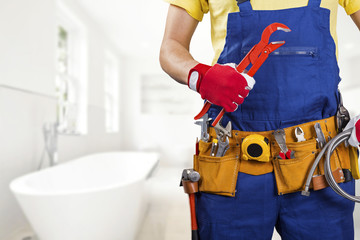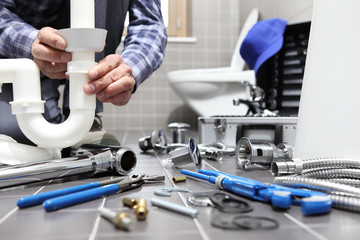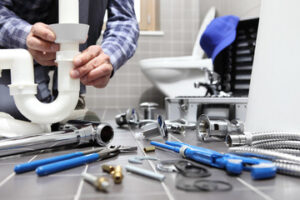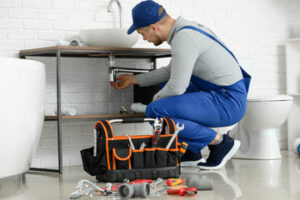Plumber Arvada CO plays a crucial role in ensuring access to clean water and proper sanitation. Their work extends beyond fixing leaks and unclogging drains. Modern plumbing systems are complex and require specialized knowledge. Plumbers adapt to new technologies and industry standards.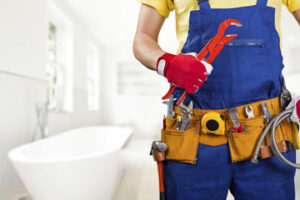
Plumbing involves more than water supply and drainage. Heating, ventilation, and fire suppression systems also rely on proper plumbing. Plumbers install and maintain these systems to ensure safety and efficiency. Their expertise protects both residential and commercial properties.
Water conservation has become a major focus in modern plumbing. Plumbers install low-flow fixtures and smart water systems to reduce waste. These solutions help homeowners and businesses save on utility costs. Efficient water management supports environmental sustainability.
Modern plumbing materials are evolving to improve durability and performance. Corrosion-resistant pipes and leak-proof fittings extend system lifespan. Plumbers stay updated on material advancements to provide reliable solutions. Choosing the right materials prevents long-term damage.
Advanced plumbing systems include automated leak detection and pressure monitoring. These systems alert property owners to potential issues. Plumbers install and calibrate these systems for maximum accuracy. Early detection prevents costly repairs and property damage.
Plumbing in high-rise buildings presents unique challenges. Water pressure varies by floor, requiring strategic design. Plumbers install booster pumps and pressure regulators to ensure even distribution. Proper system design prevents water shortages and pressure imbalance.
Smart home technology has influenced modern plumbing installations. Wi-Fi-enabled fixtures and touchless faucets offer convenience and efficiency. Plumbers integrate these systems with existing plumbing infrastructure. Smart plumbing improves user experience and reduces water consumption.
Plumbing codes and regulations are constantly changing. Plumbers undergo regular training to maintain compliance. Following local codes ensures system safety and legal approval. Professional plumbers handle permits and inspections to meet industry standards.
Water quality concerns have increased demand for filtration systems. Plumbers install reverse osmosis and UV filtration units to improve water purity. Removing contaminants protects health and enhances water taste. Clean water systems are essential for residential and commercial use.
Plumbing for industrial facilities requires specialized knowledge. High-temperature and high-pressure systems demand durable materials and precise installation. Plumbers ensure that systems meet industry requirements. Proper maintenance supports continuous industrial operations.
Plumbing in older buildings often involves retrofitting outdated systems. Aging pipes and fixtures increase the risk of leaks and blockages. Plumbers replace old materials with modern alternatives. Careful planning preserves architectural integrity while improving system performance.
Emergency plumbing services are vital for preventing damage. Burst pipes, sewer backups, and gas leaks require immediate attention. Plumbers respond quickly to minimize disruption and repair damage. Their ability to work under pressure protects property and health.
Plumbing systems in healthcare facilities have strict safety requirements. Clean water and proper waste removal are critical for patient care. Plumbers install medical gas lines and sterilization systems. Their work ensures a safe environment for patients and staff.
Green building trends have influenced plumbing design. Rainwater harvesting and greywater recycling systems reduce water consumption. Plumbers integrate these systems into residential and commercial properties. Sustainable plumbing supports environmental goals and lowers costs.
Plumbing for agricultural and irrigation systems requires precision. Proper water distribution affects crop health and yield. Plumbers design and install drip and sprinkler systems. Efficient irrigation supports sustainable farming practices.
Water pressure regulation is essential for system longevity. Excessive pressure can damage pipes and fixtures. Plumbers install pressure-reducing valves to balance flow. Maintaining proper pressure extends the life of plumbing systems.
Plumbing for recreational facilities involves complex piping networks. Swimming pools, spas, and water parks require balanced circulation and chemical management. Plumbers install and maintain pumps and filtration systems. Proper water quality ensures user safety and comfort.
Fire suppression systems rely on expert plumbing installation. Sprinkler systems must meet safety codes and function under high pressure. Plumbers design and test these systems for reliability. Effective fire suppression protects lives and property.
Plumbing inspections are essential before buying or selling a property. Undetected leaks and code violations affect property value. Plumbers provide detailed inspection reports and recommend repairs. Early identification of issues prevents future expenses.
Plumbing in rural and remote areas presents unique challenges. Limited access to municipal water and sewage systems requires creative solutions. Plumbers install well and septic systems to support self-sufficient living. Proper system design ensures long-term functionality.
Plumbing for multi-unit residential buildings requires strategic planning. Shared pipes and drainage systems need careful balance. Plumbers install backflow prevention and pressure-regulating systems. Proper design prevents water contamination and uneven distribution.
Plumbing for public infrastructure supports large-scale water management. Water treatment plants, pumping stations, and sewage systems require expert maintenance. Plumbers ensure these systems meet safety and efficiency standards. Public health depends on reliable infrastructure.
Gas line installation and repair require technical expertise. Gas leaks pose serious safety risks and require immediate action. Plumbers test and secure gas lines to prevent leaks and explosions. Compliance with safety codes protects property and occupants.
Smart plumbing systems offer real-time monitoring and control. Homeowners can track water usage and detect leaks from their phones. Plumbers install and configure these systems for accuracy. Smart technology improves convenience and water efficiency.
Plumbing for schools and universities involves complex systems. High water usage and heavy demand require robust infrastructure. Plumbers install and maintain drinking fountains, restrooms, and heating systems. Proper maintenance prevents disruptions in educational facilities.
Plumbing for commercial kitchens requires specialized design. High-temperature water, grease traps, and drainage systems must function efficiently. Plumbers install and maintain these systems to meet health and safety codes. Efficient plumbing supports food service operations.
Plumbing for outdoor facilities requires weather-resistant materials. Freezing temperatures and heavy rainfall can damage pipes and fixtures. Plumbers install insulated pipes and drainage channels to prevent damage. Seasonal maintenance ensures reliable operation.
Water softening systems improve plumbing efficiency. Hard water causes mineral buildup and reduces system lifespan. Plumbers install softeners to remove calcium and magnesium. Treated water improves appliance performance and reduces maintenance costs.
Plumbing repairs often require diagnostic tools and techniques. Thermal imaging and pressure testing identify hidden leaks. Plumbers use these tools to pinpoint issues without invasive methods. Early diagnosis reduces repair costs and property damage.
Plumbing for historic buildings requires careful preservation. Original materials and architectural details must remain intact. Plumbers retrofit modern systems while maintaining historical integrity. Careful planning preserves both function and design.
Plumbing apprenticeships provide valuable hands-on experience. Trainees learn system design, installation, and repair under expert guidance. Certification and licensing ensure professional standards. Skilled plumbers are in high demand across various industries.
Eco-friendly plumbing materials are gaining popularity. Recycled copper, PVC-free pipes, and biodegradable sealants reduce environmental impact. Plumbers source and install these materials to meet green building standards. Sustainable materials improve system longevity and performance.
Plumbing for high-traffic facilities demands durable materials and efficient design. Airports, stadiums, and convention centers handle large water volumes. Plumbers install high-capacity fixtures and drainage systems. Proper maintenance ensures uninterrupted service.
Plumbing for mobile homes and RVs requires compact and flexible systems. Limited space and mobility create unique challenges. Plumbers design systems that balance efficiency and portability. Proper installation supports comfortable living conditions.
Plumbing careers offer diverse opportunities for specialization. Commercial, residential, industrial, and environmental plumbing require different skill sets. Continuous training ensures plumbers adapt to evolving technology and industry trends. Professional growth leads to long-term career success.
